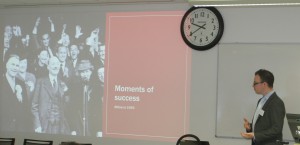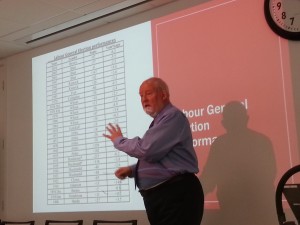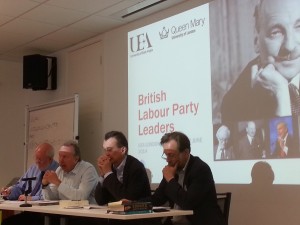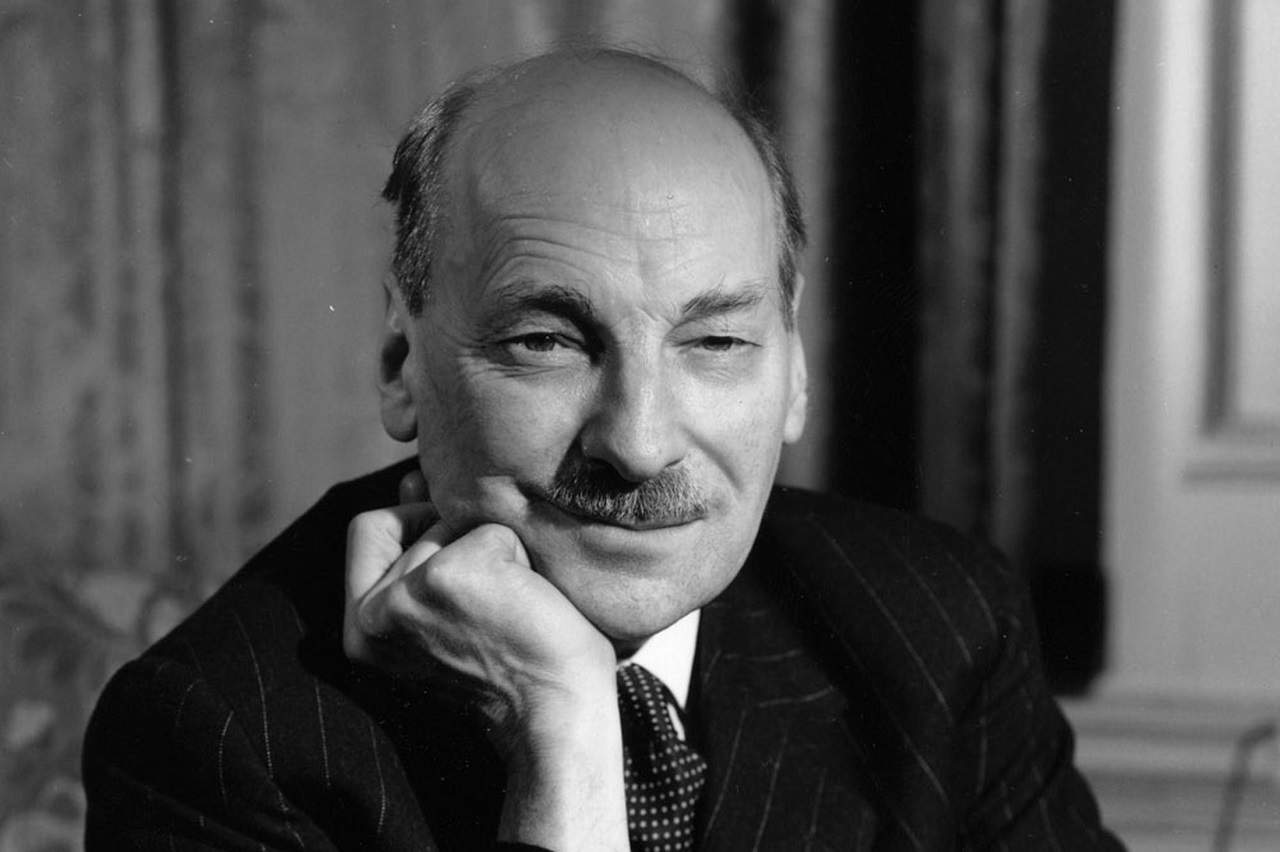Who was the most successful Labour party leader of all time? And who was the worst? If we were to just count general election victories Harold Wilson comes top with four victories. But does this tell the whole story? Are general election results really a fair test of a leader’s success?
The University of East Anglia, Queen Mary University of London and the PSA Political Leadership group hosted an event to address these questions on June 28th. Leading biographers and experts on each of the Labour party leaders.

To kick-off the discussion Toby James gave an introductory talk setting out a framework for evaluating leaders based on academic work recently published in the British Journal of Politics and International Relations. This suggests that we can assess leaders by looking at how successful they were in achieving statecraft: winning office, or moving their party towards the goal of winning of office during their tenure. It also suggests that it is helpful to think about five key tasks that leaders need to achieve to win elections: developing a winning electoral strategy, a sense of governing competence among the electorate, party management, winning the battle of ideas on key policy issues and constitutional management.

Rt. Hon Charles Clarke presented a simple statistical analysis of general election performance of the Labour leaders since Keir Hardie in the form of a ‘league table’. According to the league table Clement Attlee comes top. Labour benefited from a net gain of 225 seats and a 12.9 percentage point vote share with Attlee at the helm. Arthur Henderson came bottom, assuming that he is responsible for the 1931 general election result. A further ‘league table’of the Conservative leaders put David Cameron top.
Charles Clarke said: “Leadership is instrumental for all political parties and is an important contribution to their collective success or failure.
“The league table compares the relative success of both Labour and Conservative leaders in relation to parliamentary seats and share of the vote won or lost at general elections.
“This conference analysed their performances by reference to impartial academic analysis.”
The author of the biography of each Labour Leader to have fought a general election presented their analysis, with each leader in mind.

In the first session Steve Richards argued that it was not true that Gordon Brown had no plan for being in office, as many have argued. Instead, Richards argued that Brown had a good plan for a year until an election in 2008, but lost his way in 2007. John Rentoul carefully argued that Tony Blair ‘was the finest peacetime PM of the democratic age’. Martin Westlake defended the leadership of Neil Kinnock and the electoral progress that the party made under his leadership.
Baroness Patricia Hollis chaired some of the sessions and provided the closing remarks for the day.
- Watch Nicklaus Thomas-Symonds pre-recorded talk on Clement Attlee here.
A second event will be held on Conservative leaders later on in the year.
A selection of tweets are below. The full list of speakers list were:
The Speakers
- Gordon Brown – Steve Richards. Columnist for The Independent, presenter of BBC’s Week in Westminster and author of Whatever it takes The definitive account of New Labour’s rise and fall.
- Tony Blair – John Rentoul. Chief political commentator for The Independent on Sunday, visiting fellow at Queen Mary, University of London, and author of Tony Blair: Prime Minister.
- Neil Kinnock – Martin Westlake. Visiting Fellow, European Institute, London School of Economics and author of Kinnock.
- Michael Foot – Ken Morgan. Historian and broadcaster. Author of Michael Foot: A Life.
- Jim Callaghan – Peter Kellner. President of YouGov and co-author of Callaghan: The Road to Number Ten.
- Harold Wilson – Thomas Hennessy. Professor of Modern British and Irish History at Canterbury Christ Church University, and author of Optimist in a Raincoat: Harold Wilson, 1964-70.
- Hugh Gaitskell – Brian Brivati. Professor of contemporary history at Kingston University and author of Hugh Gaitskell.
- Clement Attlee – Nicklaus Thomas-Symonds. Author of Attlee: A Life in Politics.
- Arthur Henderson – Chris Wrigley. Emeritus Professor of History at the University of Nottingham and author of Arthur Henderson.
- Ramsay MacDonald – David Howell. Professor of Politics at the University of York and author of MacDonald’s Party.
- John Clynes – Phil Woolas. Former Home Office Minister, MP for Oldham East and Saddleworth, and author of J.R. Clynes in The Prime Ministers that Never Were.
- William Adamson – Bill Knox. Senior Lecturer, University of St. Andrews and author of many works including Scottish Labour Leaders 1918-1939.
- George Barnes – Bill Knox. Senior Lecturer, University of St. Andrews and author of many works including Scottish Labour Leaders 1918-1939.
- Keir Hardie – Ken Morgan. Historian and broadcaster. Author of Keir Hardie: Radical and Socialist.





